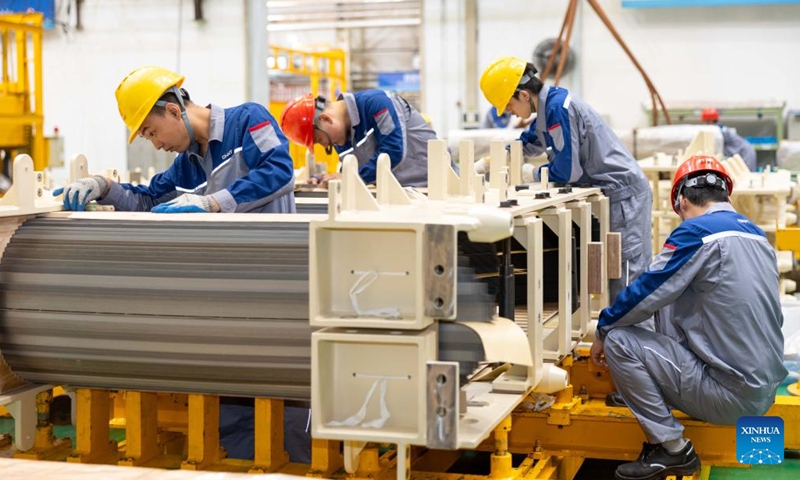
Staff members work at a factory of CHINT Group in Songjiang District of east China's Shanghai, May 23, 2024. (Photo: Xinhua)
China's private Caixin manufacturing purchasing managers' Index (PMI) rose to 51.8 in June, up 0.1 points from the previous month, marking the eighth consecutive month in expansion territory and a new high since June 2021, Caixin data said on Monday.
A reading above 50 indicates expansion, while a reading below reflects contraction. The reading followed
China's official factory activity data released by the National Bureau of Statistics (NBS) a day earlier, which came in at 49.5 in June, unchanged from May.
Both supply and demand continued to expand in June. The pace of manufacturing output growth has increased for five straight months, with the production sub-index hitting a two-year high, Caixin reported. Demand also rose, keeping the sub-index for total new orders in expansionary territory for an 11th consecutive month.
Exports continued to growth, although at the slowest pace in six months, indicating slightly weaker overseas demand, it said. Continued growth in total new orders contributed to an increase in the backlogs of work for the fourth straight month, according to the report.
Recent macroeconomic data show that the economy continues to recover, with stable production, demand, employment and prices, as well as strong exports, Wang Zhe, a senior economist from Caixin Insight Group wrote in a note on Monday.
Despite this, insufficient market confidence and effective demand remain key challenges, Wang said, noting that policy support requires further consolidation.
Efforts in optimizing real estate market, upgrading equipment trade-in on a large scale, replacing old consumer goods, and the "three major projects" -involving affordable housing, renewal of urban villages, and dual-use public facilities that can be used for everyday and emergency purposes - need to be strengthened. In addition, fiscal and taxation system reforms should focus on creating more optimistic expectations among market participants, according to Wang.
Since the start of this year, the Chinese economy has maintained its recovery momentum. It started strongly in the first quarter with a 5.3 percent year-on-year growth and continued to grow steadily in the second quarter.
Official data showed that indicators measuring consumption, trade in goods and value-added industrial output all posted positive performance in May.
International organizations and market analysts have raised their forecasts for China's economic growth, reflecting strong confidence in the country's future development.
Global Times




